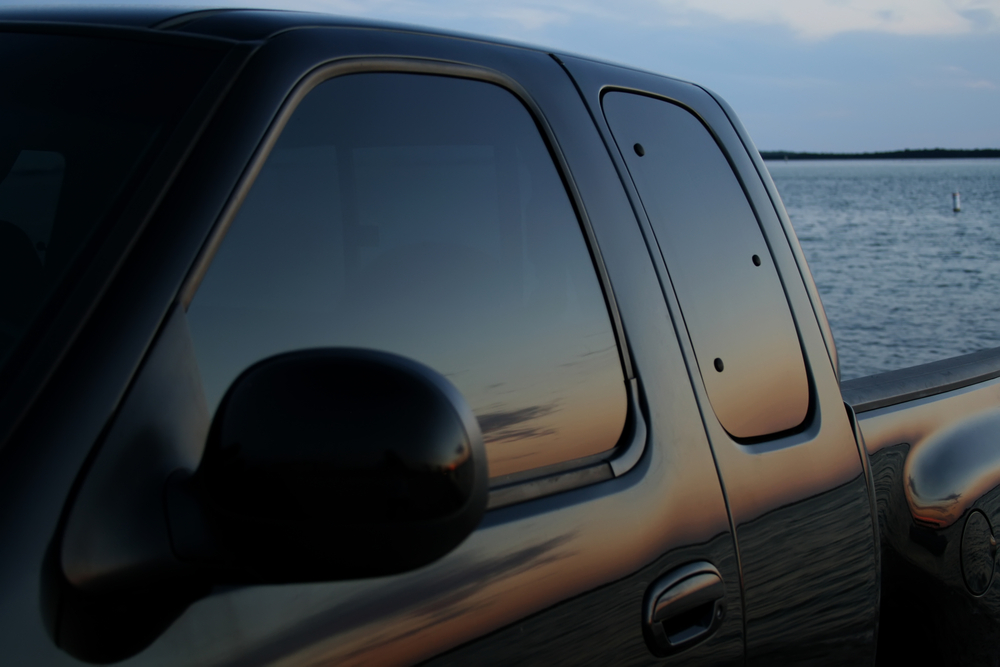
The Ultimate Guide To Window Tint Laws In Alabama (2024 Update)
Understanding the window tint laws in Alabama is crucial for vehicle owners who would like to customize their cars while ensuring compliance with state regulations. Alabama’s window tint laws, enacted in 1996, specify the Visible Light Transmission (VLT) percentage—a measure of how much light can pass through the window tint film—that is legally permissible for different windows on a vehicle.
Alabama law distinguishes between different types of vehicles, setting specific VLT limits for sedans, SUVs, and vans. Additionally, the state imposes restrictions on the reflectivity of window tints, limiting it to no more than 20% to prevent excessive glare that could endanger other road users.
This guide aims to provide a comprehensive overview of Alabama’s window tint laws, including updates for 2024. Whether you’re considering tinting your car windows for the first time or looking to ensure your current tint complies with state regulations, this article will cover everything you need to know about tint darkness, reflectivity, medical exemptions, penalties for non-compliance, and more. By staying informed about these laws, you can customize your vehicle safely and legally, avoiding fines and contributing to road safety.
Overview of Alabama Window Tint Laws in 2024
Window tint laws in Alabama regulate how dark the tint on your vehicle’s windows can be, which is measured by the Visible Light Transmission (VLT) percentage. The VLT percentage represents the amount of visible light that can pass through the window tint on your car. Alabama’s window tint laws are designed to ensure drivers’ visibility is not overly restricted, while still allowing for the benefits of window tinting, such as reduced glare and increased privacy.
Key Window Tint Regulations
- Windshield: For all vehicle types, a non-reflective tint is permitted on the top 6 inches of the windshield. This allows for a strip of tint that can help to reduce glare from the sun and oncoming headlights without significantly reducing visibility.
- Front Side Windows: The laws require that the tint on the front side windows must allow more than 32% of the light in, for both sedans and SUVs/vans. This regulation ensures that the driver has sufficient visibility of their surroundings.
- Back Side and Rear Windows for Sedans: Similar to the front side windows, the back side and rear windows must also allow more than 32% of light in. This consistency in VLT across all windows (except for the windshield) maintains a balance between privacy and visibility.
- Back Side and Rear Windows for SUVs and Vans: The laws are more lenient with SUVs and vans, allowing any level of darkness to be used on the back side and rear windows. This exception recognizes the different use cases and design considerations of larger vehicles.
- Reflection: Window tint can also reflect incoming light, which can help to reduce heat and glare within the vehicle. Alabama law permits a certain level of reflectivity in the tint. Specifically, the front and back side windows must not be more than 20% reflective for both sedans and SUVs/vans, ensuring that the tint does not become a distraction or hazard to other drivers.
- Check out this helpful infographic from Mountain Brook.
Compliance and Enforcement
To ensure compliance with current window tint laws in Alabama, the state requires a sticker or label of compliance to be displayed between the film and glass on each tinted window. Additionally, window film manufacturers must certify the film they sell in the state, so it’s important to ask your tint installer if they are using certified film.
Medical Exemptions to Window Tint Laws in Alabama
Alabama recognizes the need for exceptions to its window tint laws for individuals with certain medical conditions that require protection from direct sunlight and UV rays. These medical exemptions are designed to accommodate the health needs of drivers and passengers who may be adversely affected by exposure to the sun.
Applying for a Medical Exemption
- Eligibility: To qualify for a medical exemption, an individual must have a specific medical condition that warrants protection beyond the standard tinting regulations. Conditions often include, but are not limited to, severe photosensitivity or other disorders where sunlight exposure can lead to significant health risks.
- Documentation Required: Applicants must provide a written statement from a licensed physician in Alabama. This statement must certify the medical necessity for a window tint darker than what is normally allowed under state law.
- Process: The application for a medical exemption must be submitted to the Alabama Law Enforcement Agency (ALEA). Upon approval, the applicant will receive a document or certificate indicating the exemption, which must be kept in the vehicle at all times.
Exemption Specifications:
- Tint Darkness: The medical exemption may allow for window tint that is darker than the 32% VLT typically required. The exact darkness permitted will depend on the specifics of the medical condition and the recommendation of the physician.
- Compliance: Vehicles with a medical exemption must display a compliance sticker or label, which indicates the vehicle’s exemption status to law enforcement and inspection personnel. This sticker helps prevent misunderstandings or unnecessary citations for non-compliance with standard tint laws.
The medical exemption process for window tint laws in Alabama ensures that individuals with valid health concerns can be accommodated while maintaining the safety and regulatory standards set forth by the state. It is important for applicants to follow the process meticulously to obtain and maintain their exemption status.
Other Important Window Tinting Considerations
In addition to the specific tinting percentages and medical exemptions, there are several other important aspects of Alabama’s window tint laws that vehicle owners should be aware of. These considerations play a crucial role in ensuring full compliance with state regulations and avoiding potential penalties.
Side Mirror Tinting
- Regulation: Alabama does not impose specific restrictions on the presence of side mirrors for vehicles with window tinting. However, it’s essential for safety that vehicles maintain adequate visibility for the driver, which includes the use of rearview mirrors.
Tint Colors
- Allowed Colors: In Alabama, there are no restrictions on the colors of tint that can be applied to vehicle windows. This flexibility allows vehicle owners to choose tints based on preference or aesthetic considerations, provided they comply with VLT and reflectivity requirements.
Certificates and Stickers
- Film Certification: Window film manufacturers must certify the film they sell in Alabama, ensuring that it meets the state’s regulations on light transmission and reflectivity. Vehicle owners should verify with their installer that the film used is indeed certified.
- Compliance Stickers: Alabama requires a sticker or label of compliance to be affixed to the vehicle window, indicating that the tint meets state regulations. This sticker is typically placed between the film and glass on the driver’s side window.
To avoid penalties and ensure that your vehicle meets Alabama’s window tint laws, it’s recommended to:
- Consult with professional tinting services that are familiar with Alabama regulations.
- Verify that the tinting material is certified and that the installer provides a compliance sticker for your vehicle.
- Regularly check for any changes in the law, especially if you’re considering re-tinting your vehicle or have received a medical exemption.
By keeping these considerations in mind, vehicle owners in Alabama can enjoy the benefits of window tinting while ensuring they remain on the right side of the law.
Penalties for Non-compliance With Alabama’s Window Tinting Laws
Adhering to window tint laws in Alabama is not only a matter of ensuring your vehicle’s compliance but also about avoiding legal penalties. Failure to comply with these regulations can lead to consequences that escalate with repeated offenses.
Fines and Penalties
- First Offense: Individuals found in violation of the tinting laws for the first time may face a fine of up to $100 and/or up to 10 days in jail. This initial penalty serves as a deterrent and a reminder to adhere to state regulations.
- Subsequent Violations: For those who violate the tint laws within a year of their first offense, the penalties increase. A second offense can result in a fine of up to $200 and/or up to 30 days in jail. For third and subsequent offenses within a year, the penalties can be as severe as a $500 fine and/or up to 3 months in prison.
These penalties highlight the importance of compliance with Alabama’s window tint laws. The state enforces these regulations to balance the benefits of window tinting—such as reduced glare and increased privacy—with safety concerns, including ensuring that visibility is not compromised. Vehicle owners should ensure that any window tinting done on their vehicles meets the state’s legal requirements to avoid these penalties.
Need Legal Support After a Car Accident? Jay Pickering Law Firm is Here for You
If you’re grappling with the aftermath of a car accident, you know all too well the toll it can take — not just physically, but emotionally and financially as well. It’s a challenging path, but you don’t have to walk it alone. Jay Pickering Law Firm stands ready to support you, armed with extensive experience in personal injury law. He serves accident victims in areas throughout Alabama, including Birmingham and Hoover, Dothan, Montgomery, and Gadsden.
We’re committed to safeguarding your rights and securing the compensation you rightfully deserve. Our promise to you is unwavering support and advocacy, beginning with a 100% free case consultation. Let an experienced Alabama car accident attorney provide the answers you need and fight for you.

Attorney Jay Pickering brings over 27 years of unwavering dedication to personal injury law, with a sharp focus on representing those injured in car and truck accidents, as well as motorcycle, and bus accidents across Alabama. A proud alum of the University of Alabama School of Law, Jay is a member of the Alabama State Bar and the American Bar Association.
